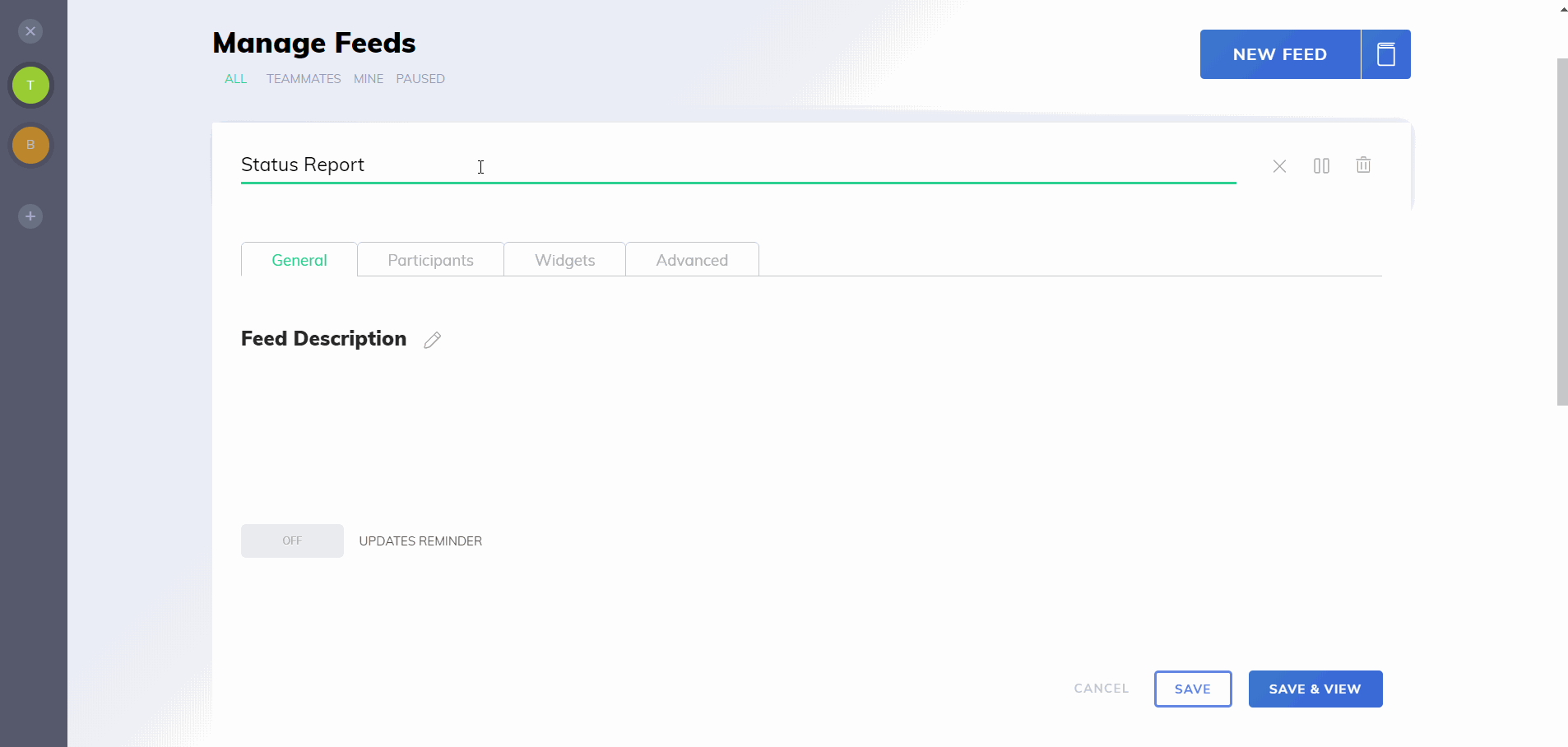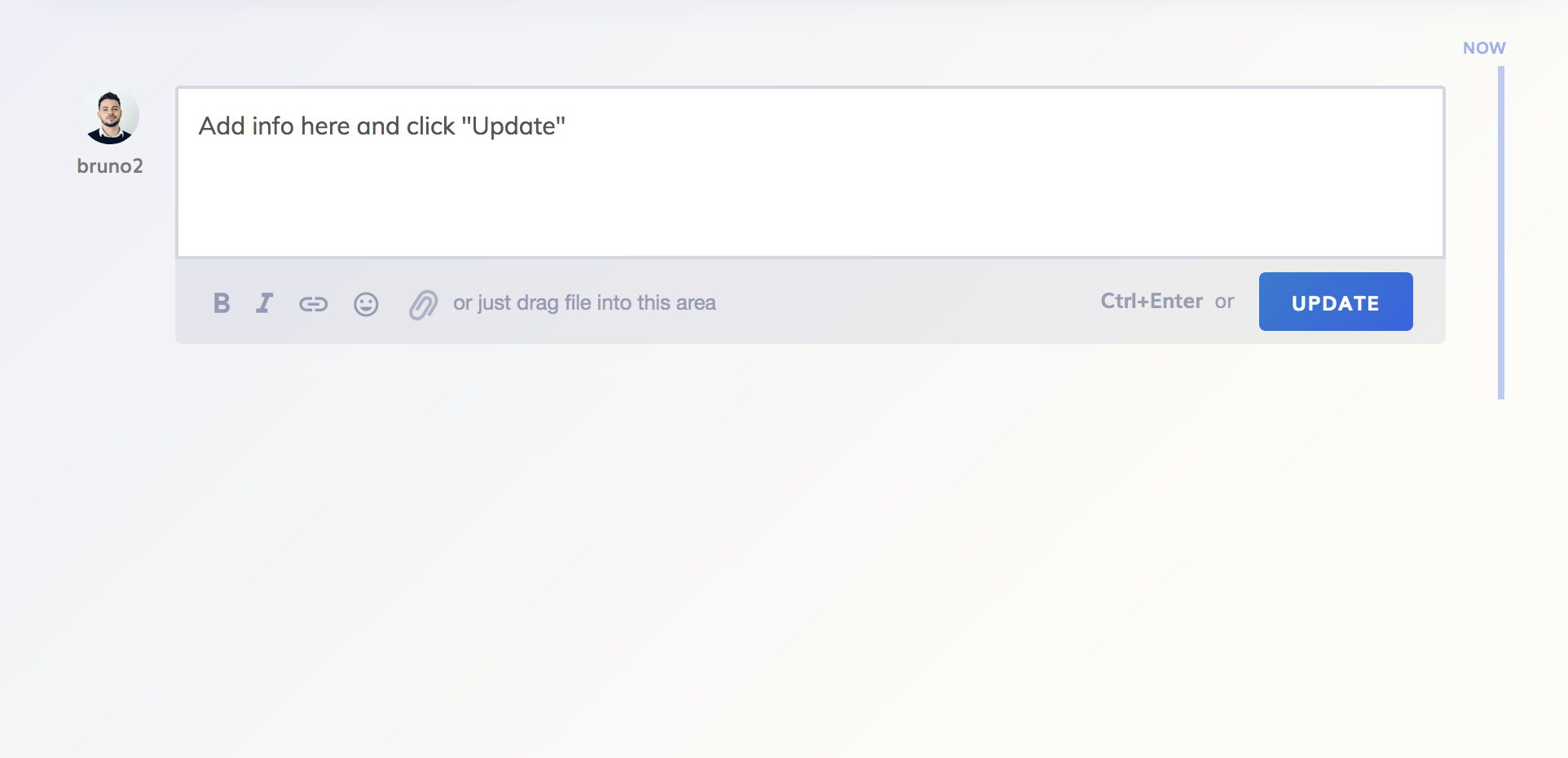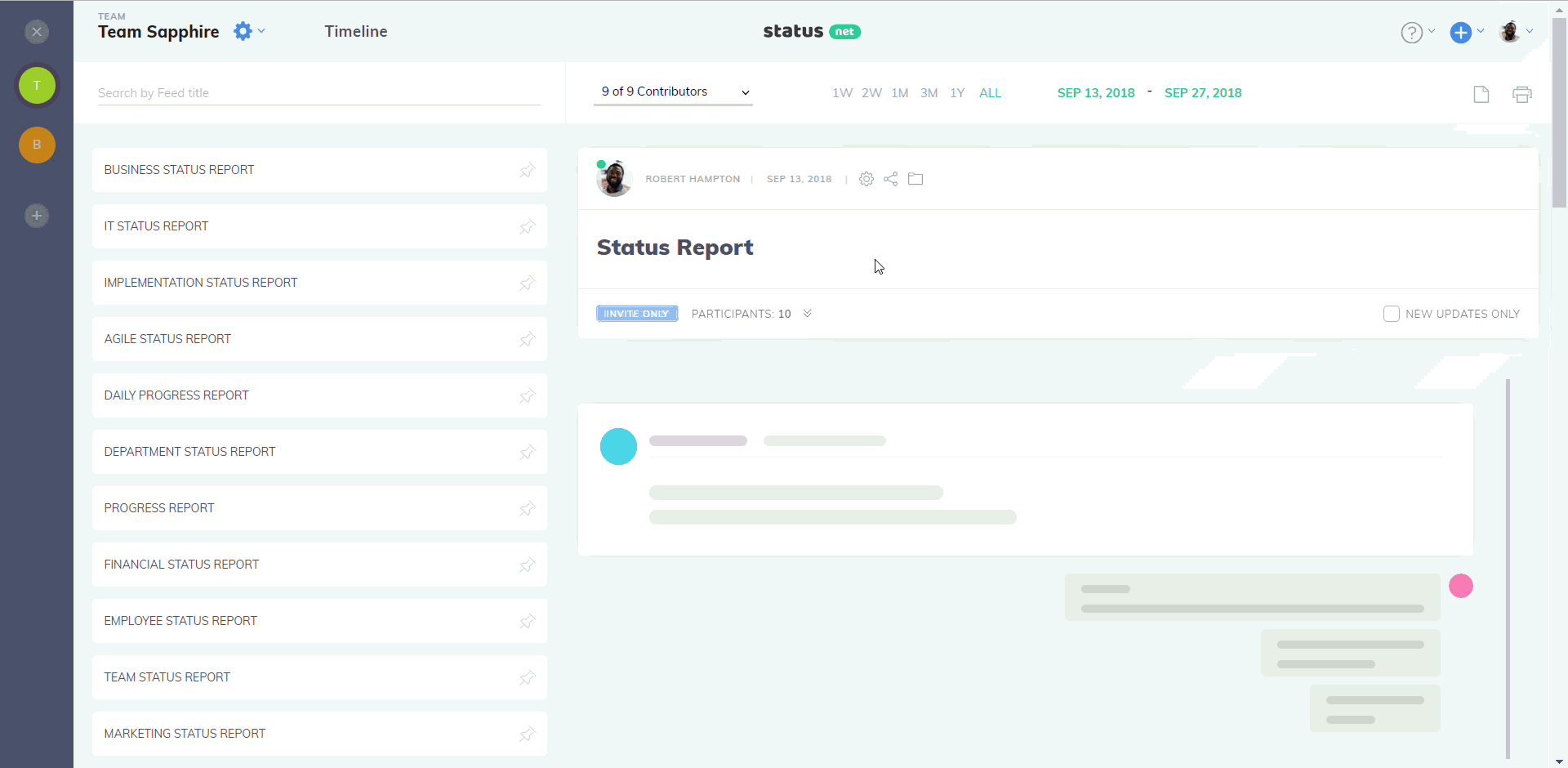The recent Gallup State of Global Workplace showed that only a mere 13 percent of all employees surveyed are engaged in their work. By engaged, we refer to those employees who were passionate about their job and realized the importance of the role they play in the success of their respective companies. The remaining 87 percent are either not engaged or actively unengaged. The former refers to those who were physically present but were mentally absent; while the latter are those who are consciously doing things, which are against the company and its reputation.
While those facts and figures are definitely alarming, what employers or team managers, like you, can do to reverse employees’ disengagement is to make them more engaged with the company’s goals and aid in actually reaching them. It is the task of a manager to weave this engagement into the employee’s daily routine and this can be best done by implementing a system of employees’ daily reporting of accomplishments and achievements.
What exactly is an employees’ daily report?
An employee’s daily task report is a documentation of his or her performance, activities, accomplishments, and achievements in a given work day. This report is usually standardized. The company or the team manager can create a template with several fields that the employee needs to fill-up to give information about the work he/she has done for the day and how it contributes to a team’s or company’s overall accomplishments.
There are several means of creating and maintaining an employees’ daily report. One idea is using a manual logbook that the manager can check from time to time. It can also be a single document per day which can be compiled in a physical folder for submission to the manager. Daily reports can also be stored electronically, for submission to the manager via email. Aside from these, there are also project management applications in the market today for the technically savvy.
With that information, the team manager will have a better understanding of where his team members are and are able to distribute workloads evenly, depending on each team members’ ability and skills.
How will my team benefit from the employees’ daily report?
The ultimate value of having the whole team document their daily accomplishments is that they get to see the progress towards the achievement of their goals as a team, on a daily basis. Each team members will be able to see how their works contributed to the overall progress of the project and if you share daily reports publicly – they will also get to appreciate other team members’ contributions.
Aside from being inspired and motivated, team members are also able to form ideas to enhance the performance of the team or to make the project more successful. They can also share their experiences, learnings, and suggestions to the team through the daily report that they will do.
For you, the team leader, the employees daily reporting serves as a way to see if your team members are still engaged on their job and to the company through their everyday activities. It also provides an avenue for mentoring, coaching, and giving feedback to the employee.
Based on the contents of the daily report of the employees, you will be able to record important information and personal notes about the team members on their respective employees’ status report. It is in the employees’ status report that the career path envisioned by the company for a specific employee is recorded, together with his accomplishments and any other matters concerning the staff’s status.
You can also look for insights from the employees’ daily report to find out whether the employee is already ripe for promotion or deserving of a salary increase.
What will the employees get from producing and maintaining a daily report?
By keeping a daily report, an employee will have a bigger picture of how and where he spends most of his time. It will help them plan their day and the days ahead and make sure that they do not forget the important things he needs to do for that day. They will also know how to schedule their tasks depending on the time of the day when they are more productive and then work on the lighter task during the time of the day when they are less productive.
If in the morning, an employee is more energetic and more productive, he could tackle major tasks at this time of the day and do other lighter tasks in the afternoon when he is less energetic.
The daily status report will also help them identify the activities related to the project he is working on and lessen those which do not contribute to the achievement of his and the team’s goals.
What should an employees’ daily report contain?
Different companies or teams may use different templates. But, for sure, a majority will ask for the basic information such as the date, time, and the accomplishment itself.
In writing the accomplishments, focus not on the tasks and activities itself, but on results. The difference is important: while your day may be filled with tons of tiny tasks, it is often hard to say how they contributed to the general mission, while the goals usually indicate your contribution.
Examples of daily tasks:
- Message Brian to drop me the file.
- Read and approve the presentation.
- Ask Celine to check final designs.
- Follow-up with Claire.
- Call 3 clients.
- Update sales.xls.
- Meet with Antony at 2.30.
Examples of daily results:
- Made sure everything was ready for March 17th conference.
- Closed 1 sale.
- Finalized drafts with Antony.
When describing your daily achievements, try to concentrate on the description of the achieved goals instead of small activities. Daily status should be able to show the progress he has made on his project and how it contributes to the larger picture.
Tip: In a daily status update, it is more important to focus on the description of the result of the work rather than the activity itself. You should be able to show the impact of the activity you have done for the day to the overall goal of the team or the company.
It is also a good idea to take note of the problems an employee encountered during the day and how he was able to solve it. Doing so will give a heads-up to the team manager, in case the same problem arises in the future and will give him the impression that the employee is ready to take on higher and bigger responsibilities.
Here is a sample list on how employees can compose an effective daily report:
- Start off the sentences using powerful action verbs.
- Do not create a “laundry list” of the activities done for that day. What’s more important is to make the readers of your daily report see the impact of these activities to the team and to the company.
- Present accomplishments based on key metrics to make it more significant and aligned to the team or company’s goals.
How will I introduce this system to my team?
Maintaining a daily status report is truly an effective way of monitoring employees’ daily accomplishments and performance and ensuring that the team members are still engaged with their jobs. Given all its advantages mentioned previously, it’s the right time to start having your employees create their daily reports if you have not implemented it yet.
How do you start implementing it?
At first, you will probably encounter resistance from the employees themselves. Tracking employees’ moves is a sensitive issue and might create tension and conflict. Some employees might feel that they are being suspected of slacking on the job while some might feel it is an invasion of their privacy.
- Make sure that before rolling this out, all your employees or team members understand the benefits they will reap from having daily status reports. Emphasize that having one will help them track their own performance and that it will help the leadership give an objective assessment of their performance and identify employees who are ready to level up.
- Describe the idea as it is really is – that it is a means to improve and enhance the company or team’s performance rather than a means to monitor their activities.
- Issue an official communication on the implementation of employees’ daily report stating the rationale behind the move and providing clear guidelines on how you will go about it. If you will be using an app or a template that the employees will simply fill up with information, set aside one day to orient them on how to properly use the app or the template. Make sure that all employees are informed about its implementation and that all their issues and concerns were already addressed.
- As a manager, make sure that you are consistent in the implementation of rules and policies.
Engaging employees through daily reporting of accomplishment may become tiresome and time-consuming at first. Initial growing pains are to be expected. Changes are not easy in the work environment. But soon, when the employees are consistently doing it because they understand its importance, it will become part of their system.
How to use status.net for status reports:
- Make reporting easier: Most fields (such as date, name, report type, and formatting) are inserted automatically by software.
- Save time: No need to spend hours in Word or Excel perfecting the report’s layout because it exports your updates into a beautifully crafted file with a couple of clicks.
- Peace of mind: No one forgets to fill in their status reports because status.net sends timely reminders according to the recurrence schedule you chose.
- Eliminate data silos: All data is accurately collected and easily accessible.
- Decrease time and effort spent on monthly, quarterly, and yearly reporting thanks to powerful filtering and export features.
- Optionally, enrich reports with the latest updates automatically added from web apps your team uses (such as project management tools, version control systems, support systems, financial applications, CRM, etc.) by connecting these apps to your status feed.
- Sharing: Status reports can be either — exported to files and printed, or sent by email; — shared with the manager online (in this case, an email with the full text of the status report will be sent automatically); or — shared online as company-wide or team-wide status reports, i.e., all team members share their progress with each other (spend less time on meetings).
How to configure status reporting:
Step 1:- Create a “Status Report” feed and set up a recurrence.
- Configure who will write and read reports by choosing the “Participants” tab and then clicking the “Cog” button near “Feed Participants” title.

- Set the status feed as “Team-wide” if you want all team members to view each other’s status reports.
- Alternatively, you can allow access to status reports for certain participants only (such as yourself if you’re a team lead). In this case, turn “Team-wide” mode OFF and restrict viewing by unchecking “View” properties for other participants. Team members with the “View” checkbox unchecked will only be able to view their own status reports.
- If you’re a manager and you don’t plan to share your status reports with your team, uncheck “Update” for yourself – in this case, you won’t receive reminders to fill in this status report.
- The Recurrence setting configures how often participants receive email reminders to fill in their status reports. This feature is optional and can be turned off.
- You can add, remove, and assign new team members at any time.

- Choose dates
- Choose people
- Click “File” button
- Choose type of report and click “Generate Report”
